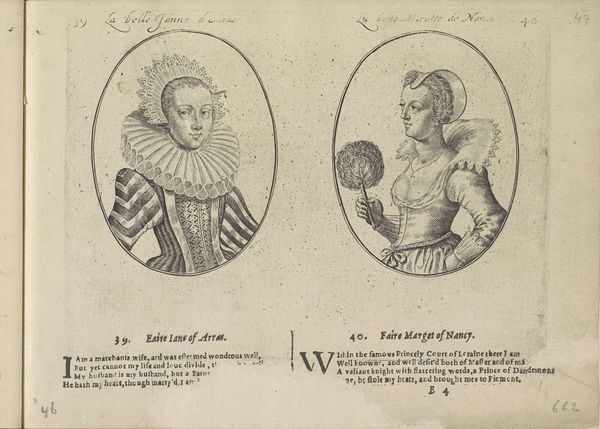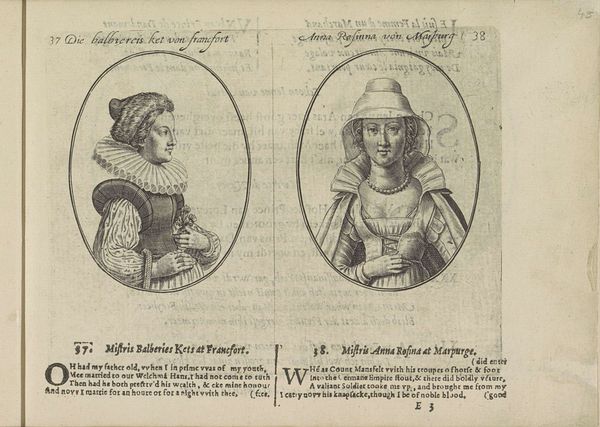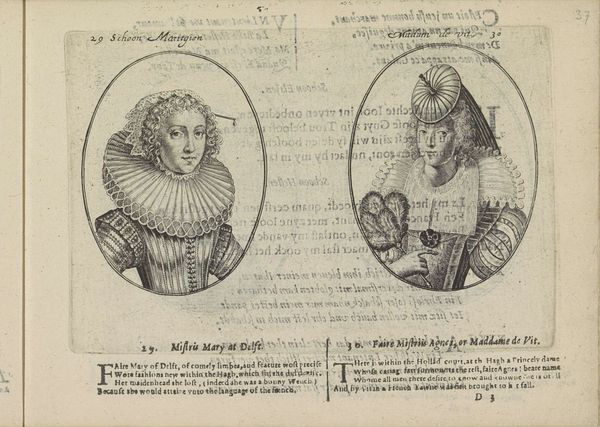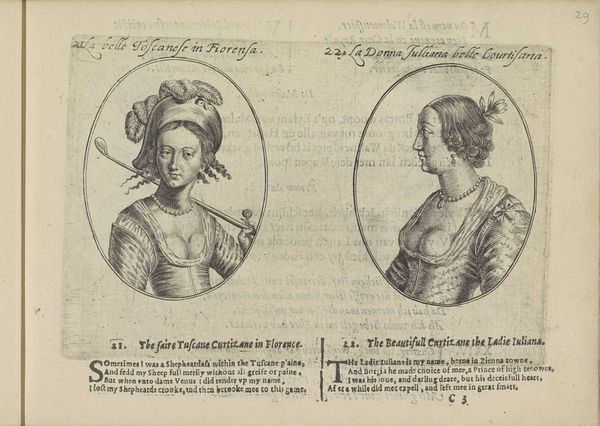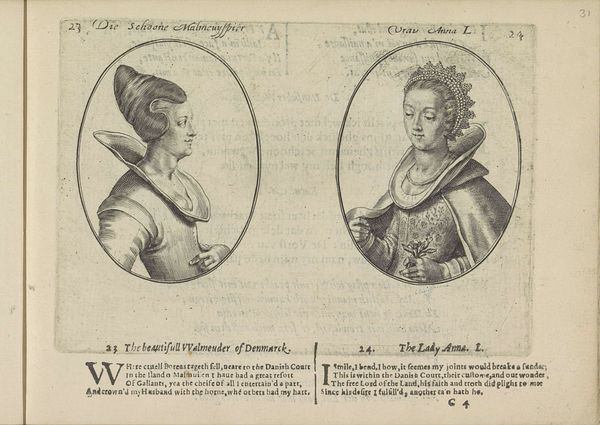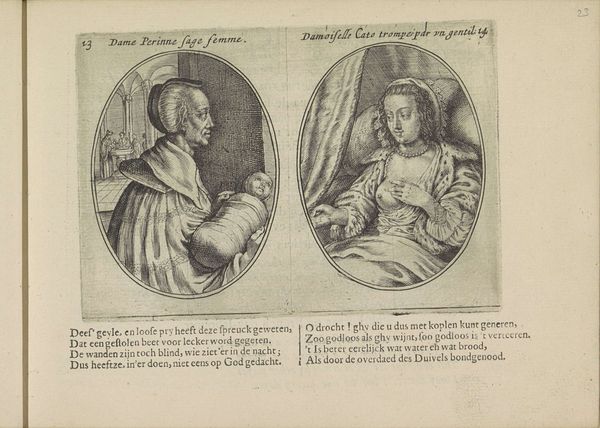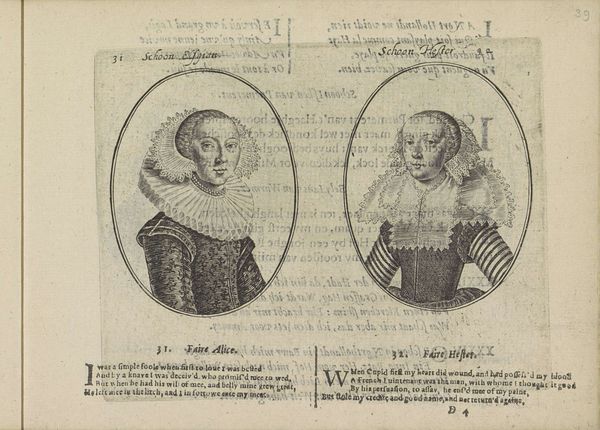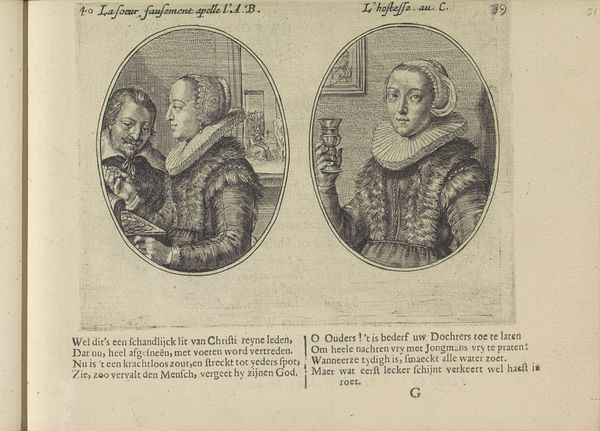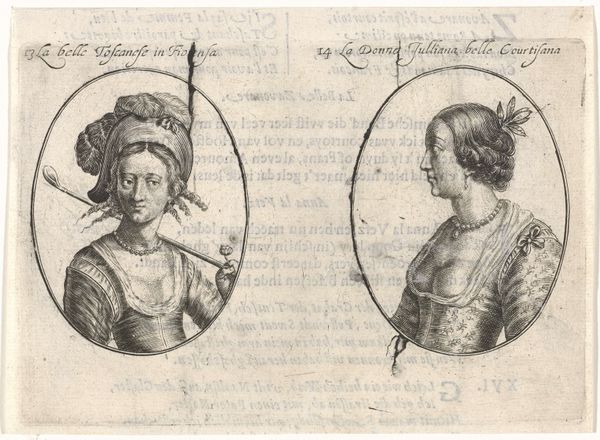
Portretten van de courtisanes genaamd Deense Wywodin en Karne A.D. 1635
0:00
0:00
crispijnvandeiipasse
Rijksmuseum
print, engraving
#
portrait
#
baroque
# print
#
old engraving style
#
genre-painting
#
engraving
Dimensions: height 112 mm, width 150 mm
Copyright: Rijks Museum: Open Domain
Curator: Let's discuss this intriguing double portrait from 1635, "Portretten van de courtisanes genaamd Deense Wywodin en Karne A.D.," by Crispijn van de Passe the Younger. It’s an engraving currently held in the Rijksmuseum. Editor: It's striking. They seem like studies in contrast, from the details in their clothing and headdresses, to how they are depicted within the simple frame. What do you see in this piece? Curator: These women were most likely courtesans. Think about the role of women, particularly sex workers, within the socio-political structure of 17th-century Europe. The detailed engraving could represent not only a physical likeness but also attempts to grapple with their status and challenge rigid notions of gender and morality. Notice the contrast between Deense Wywodin's confident gaze versus Karne A.D.'s sidelong glance; how do you think these features contribute to or undermine their perceived power? Editor: I see what you mean about power. Maybe that fur hat gives Deense authority in the portrait while Karne seems more vulnerable because her body is angled. Did they have any power beyond just their beauty? Curator: That's the important question, isn’t it? While their power likely stemmed initially from physical allure, consider how these women navigated patriarchal structures. Were they able to accrue wealth, influence social circles, or even exert some political agency? Understanding their historical context, their roles can disrupt simplistic readings of beauty, inviting conversations about sexuality, agency, and social class. How does reflecting on these women affect your view of gender dynamics in art and society? Editor: I didn’t consider the dynamics that they would’ve faced beyond what’s visually obvious. This opens my eyes to the nuanced narratives possible in historical art. Curator: Absolutely. Approaching historical art through an intersectional lens reveals marginalized narratives, inviting contemporary audiences to question prevalent cultural paradigms and explore themes of agency and identity.
Comments
No comments
Be the first to comment and join the conversation on the ultimate creative platform.

